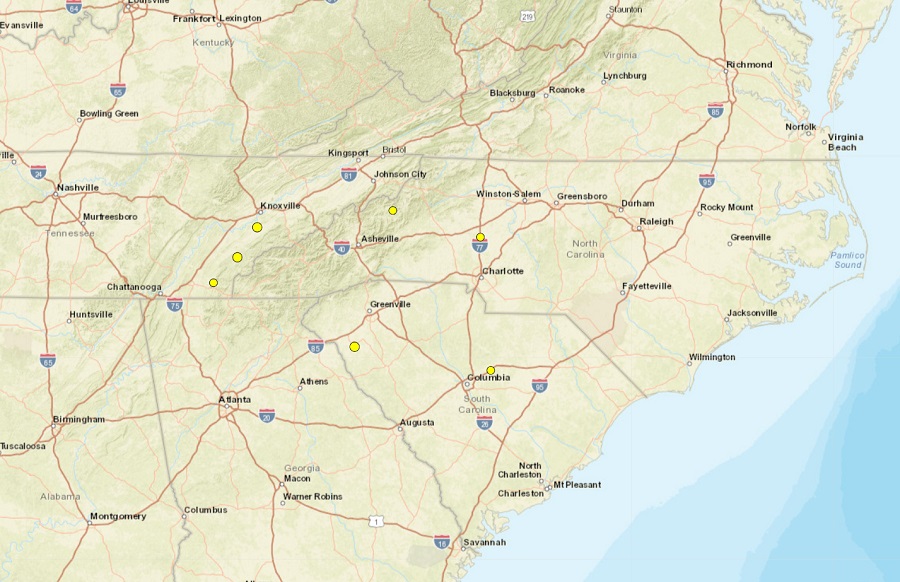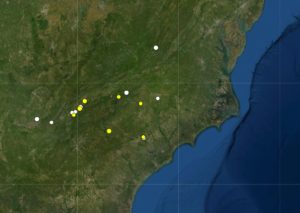
While scientists continue to explore what’s the cause of an ongoing swarm of earthquakes north and east of Columbia, South Carolina, USGS reports that several other earthquakes far from this area of concern have rattled the region in recent days, with six other earthquakes reported in South Carolina, Tennessee, and North Carolina over the last week.
The first of the earthquakes struck near Spruce Pine in North Carolina on August 13. With a depth of 6.7 km, that earthquake was recorded as a magnitude 2.0 event. While the earthquake was centered in western North Carolina, people in eastern Tennessee reported feeling it to the USGS.
On August 14, a magnitude 2.4 event unfolded in Alcoa, Tennessee. Located south of Knoxville, this earthquake had a depth of 11.6 km.
Early on the morning of August 15, a 1.5 earthquake struck Elgin, South Carolina at a depth of 3.6 km. It is in this area an unexplained swarm continues in South Carolina. Dozens of earthquakes have struck seismically active South Carolina since December. These weak to moderate earthquakes struck after a swarm came and went in December. The mysterious swarm began on Monday, December 27, at 2:18 pm in the afternoon. That first 3.3 magnitude earthquake hit 30 miles north of Columbia, South Carolina at a depth of only 3.1 km. More than 3,100 residents reported to USGS they felt it at the time, with one report of shaking coming from as far away as Rock Hill, which is at the North/South Carolina state border. While many felt the earthquake, there was no reported damage in the Palmetto State. That earthquake was followed by 10 more ranging in intensity between a magnitude 1.5 to a magnitude 2.6 event. The second earthquake struck three hours twenty minutes after the first one.
Since then, dozens of quakes have hit the Elgin area, classifying the event as an ongoing swarm. According to USGS, a swarm is a sequence of mostly small earthquakes with no identifiable mainshock. “Swarms are usually short-lived, but they can continue for days, weeks, or sometimes even months,” USGS adds. However, the South Carolina event doesn’t fit the typical definition of a swarm since the first event was substantially larger than the rest.

According to USGS, “aftershocks” are a sequence of earthquakes that happen after a larger mainshock on a fault. “Aftershocks occur near the fault zone where the mainshock rupture occurred and are part of the ‘readjustment process’ after the main slip on the fault,” says USGS. However, aftershocks of a 3.3 magnitude earthquake would only last a few days, not the many months they have.
Also on August 15, a 2.0 earthquake struck Tellico Plains, Tennessee. That quake is unrelated to the one earlier in the day in South Carolina. It had a depth of 11.1 km.
On August 16, a 1.8 magnitude event struck Troutman North Carolina, north of Charlotte and well east of the earthquake that hit North Carolina on August 13. It had a shallow depth of just .1 km.
On August 18, a magnitude 1.9 event hit Benton, Tennessee at a depth of 12.8 km. 10 hours later, a 2.1 struck Homeland Park, South Carolina, located half-way between Atlanta, Georgia and Charlotte, North Carolina.
While the earthquakes were all light and caused no damage nor injury, it is rare for this many earthquakes to hit with this magnitude across a broad area of the interior southeast.